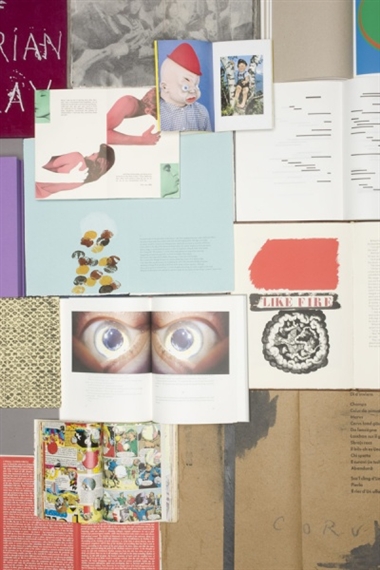While literature is often a point of departure, artistsвҖҷ books often bear little resemblance to conventional volumes. Many are sculptural, multidimensional, or made of material other than paperвҖ”some have no pages at all. Over the past three decades, the Walker has amassed a significant collection of books by artists, now numbering some 2,000 objects. Many of these are housed in the WalkerвҖҷs library, where they have long been an insider favorite. Staff and visitors conducting research cannot help but be drawn in by librarian Rosemary FurtakвҖҷs enthusiasm for the eclectic collection, which has been steadily growing under her watch since the early 1980s. The library, says Furtak, вҖңtries to have books by all artists represented in our permanent collection who have made books.вҖқ She is also вҖңconstantly trying to balance the need for new titles with an attempt to acquire out-of-print material that might represent a significant period or style of bookmaking.вҖқ Examples include books by Surrealists and Futurists, elegant tomes conceived by artists such as
Robert Motherwell and
Ellsworth Kelly, conceptual projects by
Lawrence Weiner, humorously subversive books by
Karen Finley,
Mike Kelley, and
Paul McCarthy, and rare illustrated editions such as Salavdor DaliвҖҷs take on Alice in Wonderland. Usually accessible to the public only by appointment, these items are now brought together in a major exhibition. Co-organized by Furtak and Walker curator Siri Engberg, the show highlights this important trove of material, which is supplemented with pieces from the museumвҖҷs collection. Showcasing examples from a broad range of artistic movements, the books and book-based works on view come from some of the most recognizable names in contemporary art as well as lesser known artists. The process of selecting the works in Text/Messages: Books by Artists was a fascinating endeavor for the curators, who found the premise of the exhibition to be an ideal opportunity to explore many areas within the WalkerвҖҷs collections. Even in todayвҖҷs digital age, artistsвҖҷ continued engagement with booksвҖ”as medium, material, and subjectвҖ”is evidence, say Engberg and Furtak, that this is an area of artistic invention alive with ideas and possibilities.




